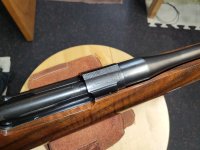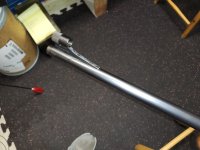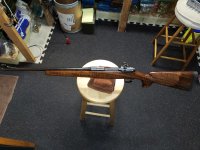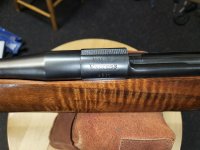I've always wondered why the '03 seems to have been so much more popular for use as a match rifle than the 1917(during their heyday: 1910's - 1950's or thereabouts when the Garands and M14's completely took over High Power - Service Rifle, and Model 70's/40X's/etc completely took over High Power - Match Rifle, 3x600, prone, long range prone, etc)?
Is the '03 simply a more inherently accurate rifle(IMO a valid question, because the '03 receiver was WIDELY used in the Mann Device for ammo accuracy testing and whatnot for like 100+ years)? Or was it a case of the '03 simply having sights more conducive to competition/precision in general/etc? Or...??
There were FAR more 1917's produced vs '03s during WW1(along with commercial variants eg: Remington Model 30 & Winchester Model 51 Imperial). And they consequently played a far bigger role in the US war effort than the '03 did, in the 1st world war...esp. if you count the P14.
I ain't aware of any commercial '03 variants(aside from the M1922 and the DCM Sporter if ya wanna count them?)?
TL;dr/summary: why no 1917 National Match Rifles? Why so few custom 1917 target rifles?
(Yes I'm aware of Comfort's winning the '35 Wimbledon Cup w/ a custom .300 H&H 1917 {{and @sirhrmechanic 's amazingly beautiful clone/recreation of said rifle, or was that you, @buffalowinter ?}}.
Regardless - my point/question still stands; the '03 dominated the Nat'l Matches up until the Garand NM and Don McCoy's match conditioned Garands were born.. and the 1917 was perceptively very rarely used in comparison. Why is that?
Thanks in advance gentlemen.
God bless & best regards!
Is the '03 simply a more inherently accurate rifle(IMO a valid question, because the '03 receiver was WIDELY used in the Mann Device for ammo accuracy testing and whatnot for like 100+ years)? Or was it a case of the '03 simply having sights more conducive to competition/precision in general/etc? Or...??
There were FAR more 1917's produced vs '03s during WW1(along with commercial variants eg: Remington Model 30 & Winchester Model 51 Imperial). And they consequently played a far bigger role in the US war effort than the '03 did, in the 1st world war...esp. if you count the P14.
I ain't aware of any commercial '03 variants(aside from the M1922 and the DCM Sporter if ya wanna count them?)?
TL;dr/summary: why no 1917 National Match Rifles? Why so few custom 1917 target rifles?
(Yes I'm aware of Comfort's winning the '35 Wimbledon Cup w/ a custom .300 H&H 1917 {{and @sirhrmechanic 's amazingly beautiful clone/recreation of said rifle, or was that you, @buffalowinter ?}}.
Regardless - my point/question still stands; the '03 dominated the Nat'l Matches up until the Garand NM and Don McCoy's match conditioned Garands were born.. and the 1917 was perceptively very rarely used in comparison. Why is that?
Thanks in advance gentlemen.
God bless & best regards!





